There’s been some Wisconsin reports: Lake Geneva, WI and Iowa County. Will Iowa state be next?
Photos
There are hundreds of cicada photos on flickr. Here’s some favorites:
A large pile at the foot of a tree.
There’s been some Wisconsin reports: Lake Geneva, WI and Iowa County. Will Iowa state be next?
Photos
There are hundreds of cicada photos on flickr. Here’s some favorites:
A large pile at the foot of a tree.
Madeline pointed out that Smart Zone Technologies are selling the legendary cicada keychain for $450 for 1000. I’m mildly obsessed with the keychain, but not enough to place an order. Actually I have to pay rent and there’s a new bass guitar that I want instead. 🙂
If any entrepreneurs out there are looking for a cicada item to sell — this is it. And if you do… you own Madeline a small finders fee.
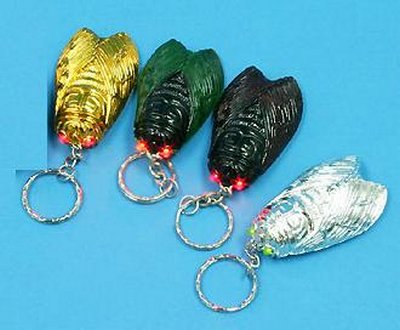
Here’s a break in the Magicicada mania: a Diceroprocta vitripennis. This photo was taken by Cicada Mania regular Paul Krombholz in Jackson Mississippi just last week. Cicadas like Diceroprocta vitripennis are annual cicadas: they emerge each year in small numbers, and as you can see, they rely on camouflage for survival. Annual cicadas are also quite shy compared to the periodic Magicicadas — they have very different life strategies. American annual cicadas rely on stealth and cunning to survive while searching for a mate. Periodic cicadas rely on the fact that there are so many of them, that some will always survive to carry on the species.
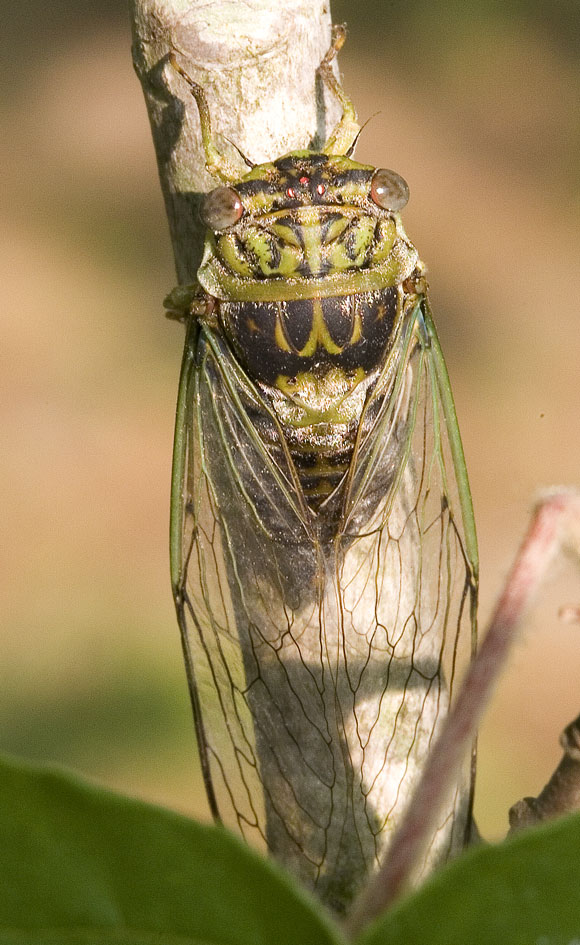
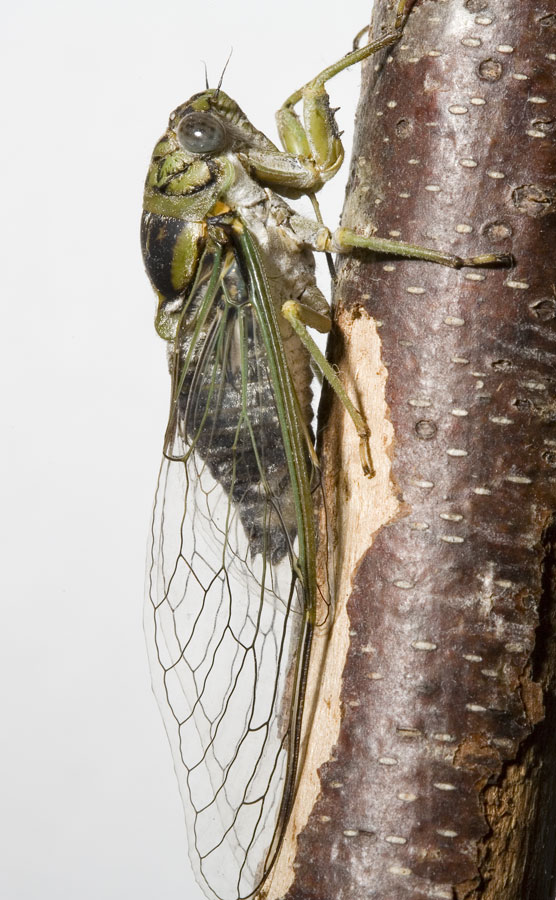
Notes from Paul:
I am continuing this season to try to get pictures of all the cicadas in the
Jackson, Mississippi area. I just got a female specimen of Diceroprocta
vitripennis. I found it in low vegetation on a sand bar next to the Pearl
River. Thanks to John Davis and the collectors at the Mississippi Museum of
Science for the tip on where to look for them! From head to wing tips, it
is 38 mm, but the wings of this species are longer in relation to body
length than those of Tibicens. Body length of this vitripennis was only
22mm.
Here’s some nice close ups (macros) of a Magicicada emerging from its exuvia (what most people call skin, or husk, or shell). The photos were taken by Michael Fiorenzo with a Nikon Coolpix 3200. Click the images for the full size originals.
Molting Magicicada:
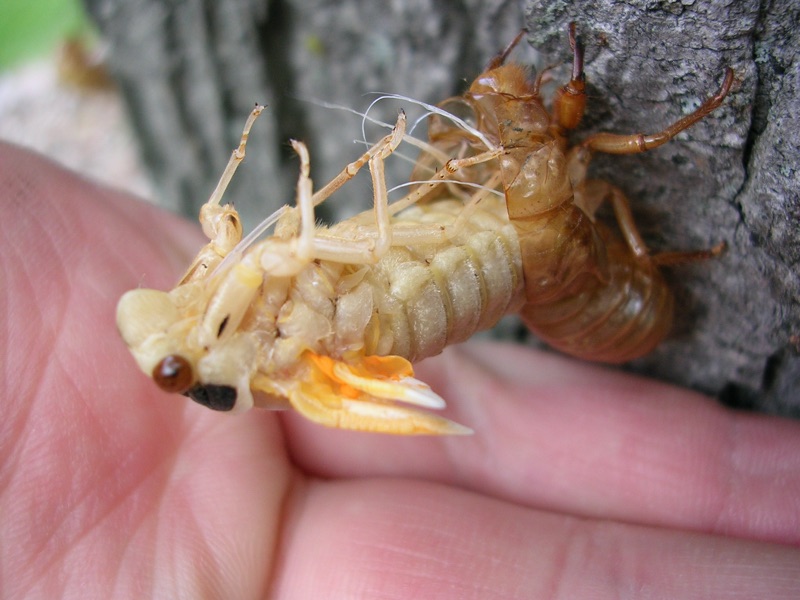
Molting Magicicada:
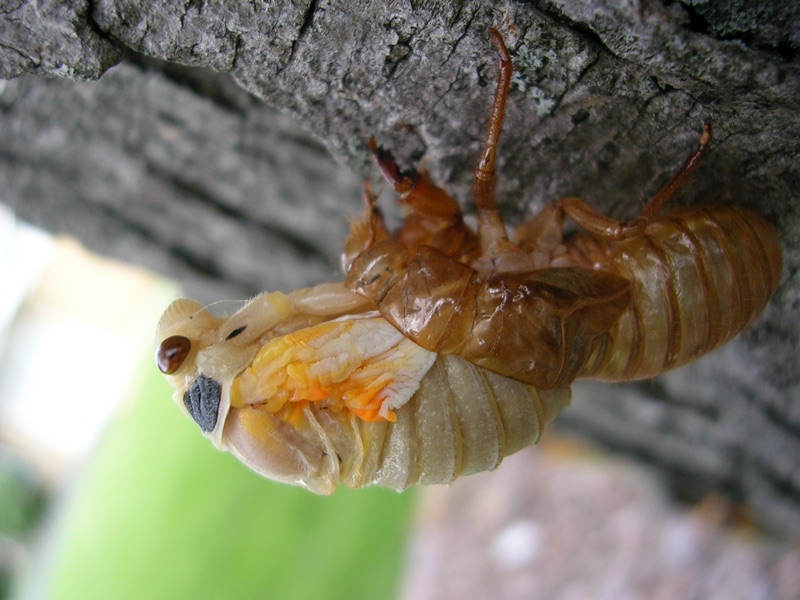
Mating Magicicada:
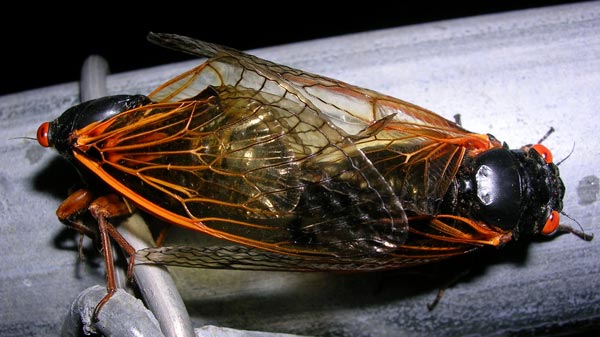
A quick break in the Brood XIII action:
A website about Japanese cicadas (Semi). It’s interesting to see all the different varieties of cicadas that exist around the world.
Many, many photos of Japanese cicadas thanks to Google photo search.
New Emergence Locations: River Forest, Oak Park, Lenox (all Illinois)
Photos:
More Flickr photo sets:
srfagan’s cicada photos. Nice photos of piles of cicada skins at the base of a tree.
Also read my article: Are cicadas safe to eat?. Watch out if you’re prone to gout.
They’re very rare, but some Magicicadas can have blue or white eyes. Take a picture if you find one! Besides red, orange, white and blue, you might also find a magicicada with cream, yellow or tan eyes.
Can you guess why the Cicada Killer Wasp is called a cicada killer? They’re big wasps, but they’d rather sting a cicada than you. Read more about the Cicada Killer Wasp.
Whether they’re in the ground on a root, or on a tree limb, cicadas drink tree fluids called xylem sap to stay nourished. They drink they fluid using their beak, also called a rostrum — it looks like a straw!
Even though the maps at the top of the page might suggest there are Magicicadas in your area, you might not find them on your property.
Here’s some reasons why:
If none turn up in your yard, don’t give up hope:
They’re out there, you just might have to travel a bit to see them.
Emergence Location: Highland Park.
Photos:
An interesting photo from Daniel Devine’s blog: one nymph crawling on top of an adult trying to emerge:
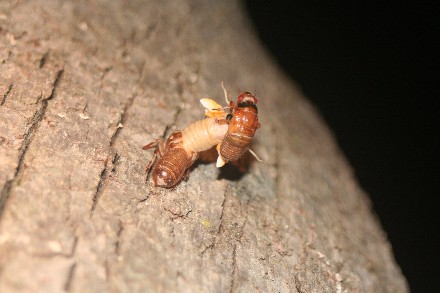
Photos by Mark Muto of cicadas from North Riverside.
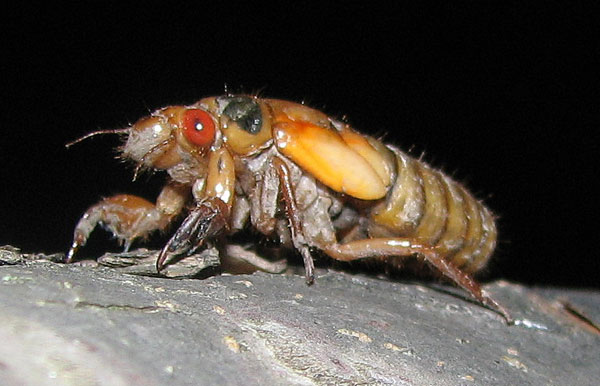
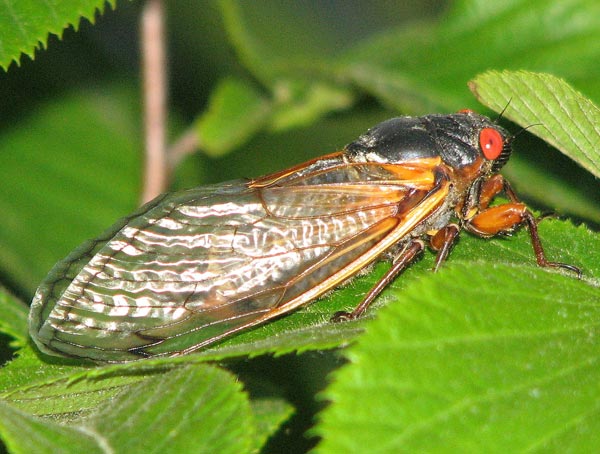
Check out the CicadaCicadaCiada rapp by Soul-gers on the Mic (MySpace Music). You’ll notice that they use real cicada sounds in place of instruments in the song — pretty cool!